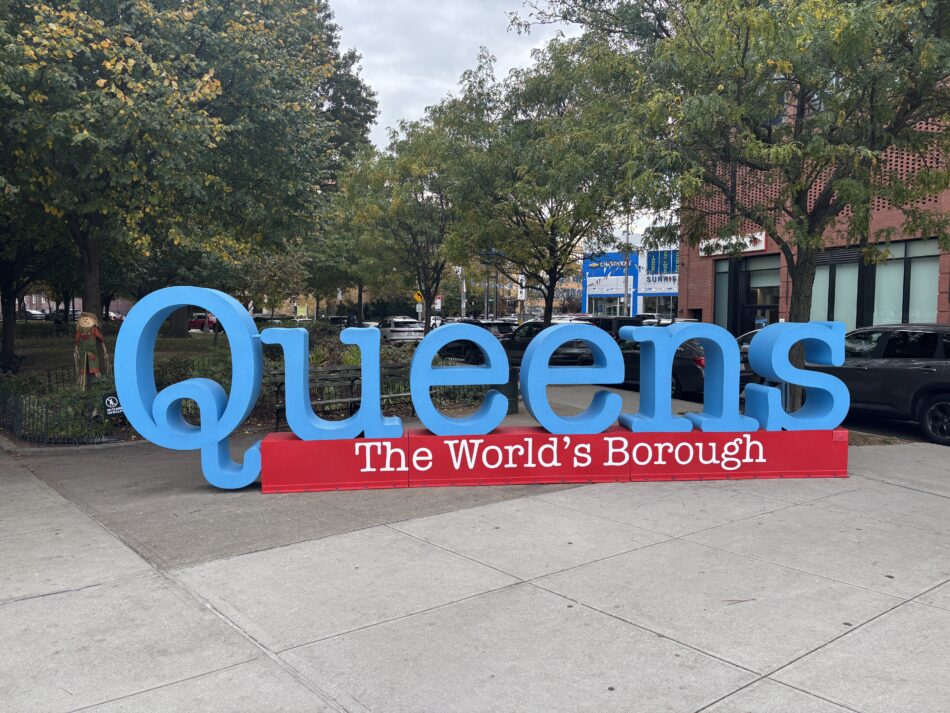Older White Forest Hills Residents Explain the Current State of Their Neighborhood and Their Thoughts of the General Election
Queens was once home to President Trump, and a nearly homogenous population of people. Archie Bunker, a fictional character made to epitomize the essence of Queens, reflected some of the widespread thoughts and attitudes that were synonymous with the borough during the 1970s. Now, people like Bunker have become outliers.
White Americans have become the minority in Queens. For a borough that was once the epitome of White urban and suburban life, it has now become the mecca for diversity.
The last time Queens had a majority White population was the 1980s. Since then, the borough has grown to become the most diverse metropolitan area in not just New York, but the entire United States. According to a survey conducted by the World Population Review, Queens’ population is currently 28% White. This is a drastic decrease from the 1940s and 1950s where the White population was about 92% of the overall population.
In the 1950s, White families flocked to Queens in droves—seeking to become a part of the growing suburban lifestyle. Over time, this group, once the most prevalent and dominant within the area, now hosts one of the smallest voting demographics within the borough.
Given how diverse Queens has become, there only remains a few neighborhoods where the White residents represent the largest percentage of the population. Forest Hills is the largest of these remaining neighborhoods.
Alon, Niel, and Alicia are three Jewish residents, who have lived in Forest Hills for decades. Alon has lived in the neighborhood for around 50 years; he stated the biggest difference he has seen from his time in the neighborhood is the growing diversity.
“There is far more diversity among the people now,” he said. “It was a big Jewish community. It’s still largely Jewish but more and more people have come here.”
The trio recounted how there used to be less traffic, more interaction between members of the neighborhood, and an overall more unified communal culture. They explained how the little advancements of restaurants and shopping areas has made Forest Hills better; however, it has also made the area a popular moving destination which has caused more outsiders to replace locals.
Despite the variety of cultures and customs that have flooded the neighborhood, the long term residents did not seem to mind. When asked if there were any issues with diversity and the shift in the population’s demographic, Alon said, “I don’t know if it’s as much about culture as it is about young people everywhere.”
He, along with his companions, explained how in addition to becoming more culturally diverse, the area was also becoming more diverse in age. They stated how certain young people seemed less aware and less willing to engage with the older community that was already there. Niel made a lighthearted joke about kids who would run into them because they had their faces glued to phone screens instead of watching the sidewalk.
The group’s feelings towards the younger generation seemed to reflect their perspectives on the election. They spoke briefly about Curtis Sliwa, explaining how he was the most representative of what it means to be a New Yorker. Even though they praised Sliwa as a person, they did not view him as a successful or likely candidate.
According to recent polls, Sliwa has been struggling. He is a distant third to both Mamdani and Cuomo who are the heavy favorites in the approaching general election.
“He’s a big part of New York, but he struggles to gain traction as a politician,” Niel said.
Alon, Alicia, and Niel reflected the attitudes of older Forest Hills residents who have been a part of the community for decades, but what about the White residents who have not lived in the neighborhood for as long?
Steve Strauss has been a part of the Forest Hills community for six years and has recently gotten involved with advocating for specific affordable housing policy changes for the upcoming general election.
Throughout his time living in the neighborhood and advocating for housing policies, Strauss has come into contact with a variety of people within the Forest Hills community.
“I think the neighborhood is a bit more conservative,” he said. “We have a high Asian population and a high Jewish population, and they are more wary of Mamdani, rightly or wrongly.”
Strauss attributed the conservative nature of the community to its long history and consistent older voting demographic. Despite the overall conservative nature of the community, he expects a fairly divided vote. Moreover, according to the primary election results by district, the Forest Hills neighborhood had more people supporting Cuomo over Mamdani.
“I expect the neighborhood will be divided,” he said. “Silwa will get 25%, Mamdani will get 35%, and Cuomo will get 40%.”
As the election approaches, older White voters in Forest Hills seem to gravitate toward Cuomo over Mamdani because he presents more of a moderate and conservative approach, and Silwa is becoming less and less of a realistic candidate. In a race where their first option is not available, voters in Forest Hills appear to be committed to electing the familiar face rather than the newfound anomaly.


